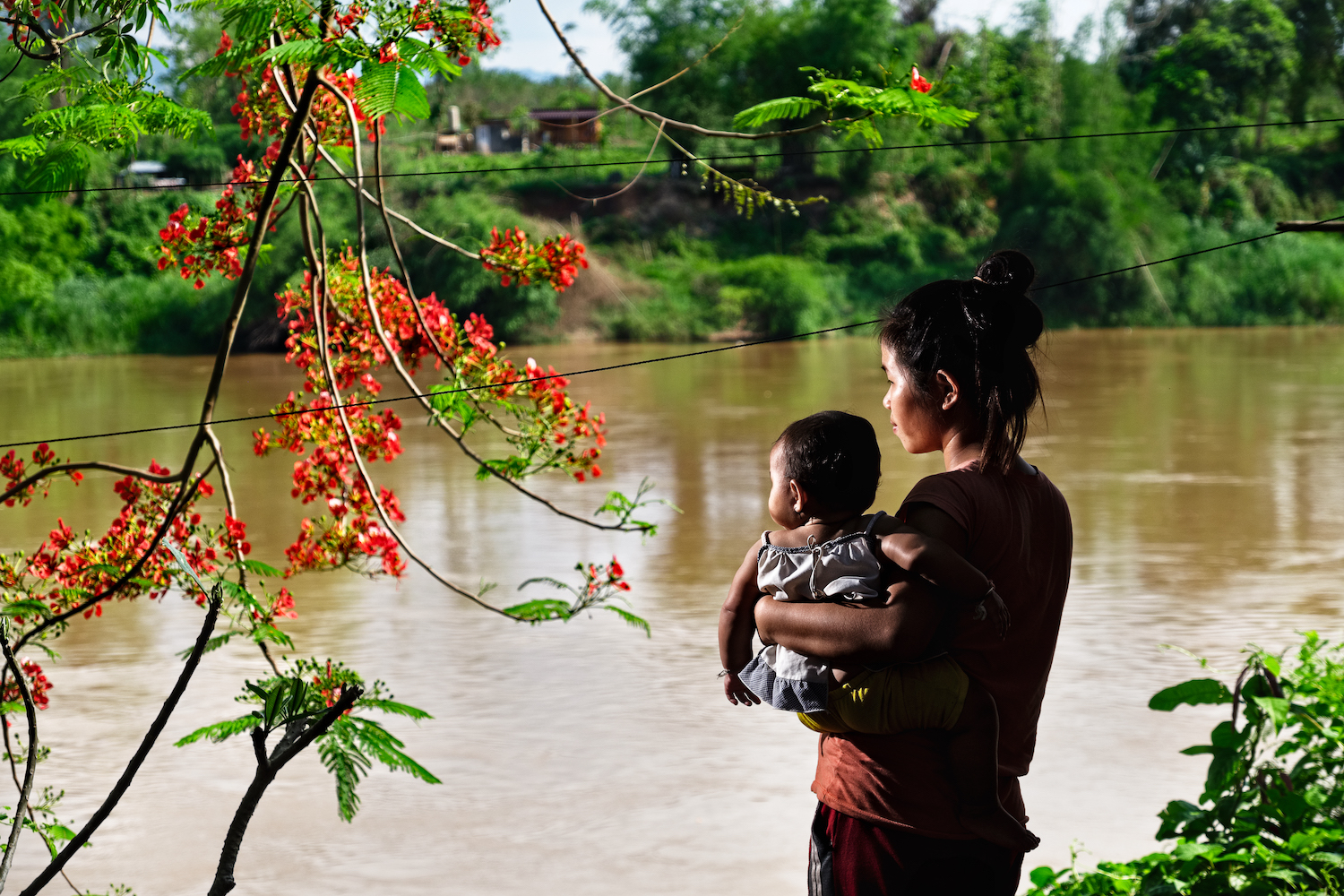The Lao People’s Democratic Republic has an ambitious agenda for achieving the health-related SDG3 targets while undergoing a period of economic, demographic and epidemiological transition. The country is preparing to graduate from Least Developed Country status by 2026 and will transition from at least some key donor support in coming years. While Lao People’s Democratic Republic has responded well to the COVID-19 pandemic, the economic impact has been significant, with GDP growth declining from 5.2% in 2019 to -0.6% in 2020, increased debt burden and constrained budgetary space for essential expenditures. Strengthening the resilience and sustainability of the health system in the context of donor transition and the negative impact of COVID-19 on the health sector budget will be critical as the Government aims to achieve UHC through PHC strengthening by 2025 and the vision of health for all by 2030.

Lifestyle of people living by the Mekong river in Sangthong district. ©WHO/Yoshi Shimizu
Lao People’s Democratic Republic is preparing for an older population with more non-communicable diseases while ensuring continued progress on child and maternal health and the control of communicable diseases. The Government has recently updated its Health Sector Reform Strategy and endorsed the 9th Five-Year Health Sector Development Plan 2021-2025 and is implementing the decentralization policy, Sam Sang (Three Builds), to empower sub-national governments to strengthen health governance capacity and develop integrated health services with primary care and essential public health functions at the core, enabled by empowered people and communities and multisectoral action. Overall donor coordination in the health sector takes place through a Sector-wide Coordination Mechanism chaired by the Government with WHO and Japan serving as co-chairs.
Lao People’s Democratic Republic is being supported by agencies in the GAP SFH accelerator working group - World Bank, Gavi, Global Fund, WHO and UNICEF - together with CHAI, building on earlier efforts under the 3G, 4G and 4G+1 initiatives. In 2019, the Ministry of Health of Lao People’s Democratic Republic began developing a health financing strategy for its period of transition to domestic financing in 2021-2025 with support from WHO in close collaboration with the World Bank, Swiss Red Cross and other partners. The strategy aims to increase sustainability, accountability, efficiency and equity in the health system and more closely align development assistance with the Government’s priorities, thus providing a framework for support by GAP signatory agencies and other partners. Further, the strategy provides strategic directions to improve implementation of the National Health Insurance Scheme which has been rolled out nationwide other than Vientiane Capital since 2016. Under these directions, the government is currently updating the National Health Insurance Strategy with support from WHO and other partners including Swiss Red Cross and ILO. Joint work to cost an Essential Health Service Package and scale it up by 2025 has been supported by Gavi, ILO, UNFPA, World Bank, WHO, Swiss Red Cross, Fred Hollows Foundation and other partners. JICA and the Asian Development Bank have played significant roles in developing and supporting sector-wide coordination and evolution of PHC. Partners are committed to continue working in key areas of the health financing and PHC interface such as aligning support around the Community Health System Strengthening Action Plan led by UNICEF; support led by WHO for strengthening the integrated HMIS on DHIS2 platform and the interoperability of other systems with HMIS, improving coordination efforts and supporting service delivery integration based on the Government’s priorities and plans.
Health funders in Lao People’s Democratic Republic are increasingly providing more joined up support, as illustrated by the new Health and Nutrition Services Access Project (HANSA). HANSA was jointly developed by the World Bank and the Global Fund working with the Government and other members of the GAP SFH accelerator working group. The project pools resources from the Government of Australia, World Bank and Global Fund and employs a performance-based approach that links disbursement of funds to the achievement of agreed indicators with the aim of improving accountability, efficiency and sustainability of health financing. The project has a strong focus on increasing equitable access to PHC. The HANSA funding partners also supported a joint gender assessment leading to a jointly-funded gender action plan in support of the Ministry of Health’s gender strategy. From the Global Fund’s perspective, the project will help the country prepare to transition from Global Fund financing and take greater ownership. Gavi has also intensified its engagement with other partners including the Global Fund, UNICEF, World Bank and WHO in advance of the country’s transition from Gavi financing in 2022. At the same time, the World Bank and Gavi are supporting overall strengthening of public financial management for health.
